You are using an out of date browser. It may not display this or other websites correctly.
You should upgrade or use an alternative browser.
You should upgrade or use an alternative browser.
Separated at Birth: America and Drakia
- Thread starter Ephraim Ben Raphael
- Start date
- Status
- Not open for further replies.
Well considering some of the photos here seem to from post WW2 I am kinda curious to the state of weapons technology. Since aircraft technology was roughly on par with the late 1920's of OTL, along with prototype repeaters as far back as the early 19th century. I'd imagine that by now most major nations would have semi automatic rifles and even assault rifles as standard issue.
Fundamentally OTL Japan was never going to win, not just because of the vast material differences (for vast material differences have sometimes been overcome), and not just because of the toxic and dysfunctional strategic culture (for even good commands often make as many mistakes as not), but the interplay between them both together. Like long after sufficient evidence should have been provided that the Japanese codes were compromised they still categorically refused to consider that as a possibility as to why their merchant marine just got deleted. At the beginning they looked at their own codebreaking efforts and cryptology and devised a schedule as to when codes should be likely compromised and should be replaced and then rigidly adhered to that old schedule come hell or high water, because the high command lacked the technical competence and the professional study to truly envision the battlefields Japan was to face, and even facing right now, against America. Japan was not in a material environment that gave everyone and their dog a radio like America was and so Japan did not have the luxury of mass radio use and mass signals work displayed right there before them, but it was those limitations then producing only a limited number of comprehensive experts and even fewer of those being availed to Japan's strategizers that made even Japan's conditions not being used to the fullest extent. Like part of the reason American codebreakers got so good at penetrating within the week a code supposed to last for months was that all their communications had the same stock opening courtesies like "I have the honor of informing your excellency"... so that the first fragment of every code is already linked to its true message. And they kept doing this. In wartime.
ATL however that interplay is lessened on all fronts. Firstly like I mentioned earlier Japan is likely to have a lot less ancient generals who made their name massacring Koreans officially in charge of their efforts as Imperial Japan is ever so slightly less of a fascist clusterfuck. Secondly, from the other direction, America sure has a lot of Admirals that made their name massacring Filipino strikers and protestors now, don't they? And that is only compounded by the in-fighting between the entrenched officership and what are basically going to be political officers assigned by the Perdue administration to defang them- so anything or anybody with a navy stamp on them is to be respectively attacked or defended to the death, regardless of any actual value. And thirdly, the insane Separateverse technological advancement has left countless critical sectors of everyone's economies obsolete and their actors ill-educated in what's just off the line. So honestly, Separate-Japan has a genuine shot at something here (at least in this specific first conflict), if they don't fly by the seat of their pants like OTL and actually think long and hard about how they want to accomplish their objectives.
Achieving something? Maybe, but the SaB-verse US is not the 800-pound gorilla in a room with several hundred-pound apes but the 2000 pound gorilla in a room that maybe totals 3200 pounds. If Japan starts a war in a way that makes it impossible for the US to get away with a "peace with honour" it gets crushed. TTLs USA at WWII levels of mobilization would be a sight to behold. Japan needs a "good" war in order to win and considering that she's likely going to be picking a fight over US hegemony over the Pacific well....
Japan and the United States may not even go to war here, since they've held mich closer relations than either ever had in OTL up to this point. While at this point the good old US of A is currently dealing with the growing mess down in the latin American portions of the country and the rising boogeyman of the Domination. I could see both sides generally agreeing to some type of Alliance in the event of another World War since the Japanese would be a potent ally against the Domination.
I kinda wonder if the USA being more multicultural here developed an earlier fascination with Japanese and East Asian culture.
I kinda wonder if the USA being more multicultural here developed an earlier fascination with Japanese and East Asian culture.
I see both the Drakians and the US Marines still stressing marksmanship and the belief that every soldier is a rifleman first. Vehicle crews and shock troops may be issued semi automatic weapons. Assault rifles may at first belong to specialized units. Police units have shotguns and possible semi-automatics depending on location. Both sides will have helmets. The Drakians and USMCs equipment may be made for various tropical climates. I figure the Drakians would be more advanced in tropical diseases and medicine due to their climate and various research programs that they have conducted. I also figure many Drakian units will carry knives and various melee type weapons as a symbol of pride and identity.
Ephraim Ben Raphael
Banned
technically, we're all time travelers
Quite so, although if I ever get an ATL machine then my second visit will be to Stephen Hawking's time travel party.
Just binged read this and let me just this is the one of the if not the best Draka timelines I've ever read! Right up there with Crack at the Draka and Even Dogs were Wolves Once (sorry can't remember the exact name.) You sir have successfully managed to do what few have ever dreamed of, taking Stirlings feaver dream and actually managing to turn it into a believable, cohesive timeline! Bravo!!!
Thank you! That's very nice to hear.
I can’t wait to see where this tl goes, I love how you make an overdone and imo slightly boring ah concept into one of the most fascinating tls I’ve ever read!
And thank you too, I seem to be achieving my goal.
Well considering some of the photos here seem to from post WW2 I am kinda curious to the state of weapons technology. Since aircraft technology was roughly on par with the late 1920's of OTL, along with prototype repeaters as far back as the early 19th century. I'd imagine that by now most major nations would have semi automatic rifles and even assault rifles as standard issue.
I'm hoping to spend some time on technology in the next chapter, if not then in the chapter after that. In any case you're right about semi-automatic or fully automatic rifles being either standard issue or getting there.
I kinda wonder if the USA being more multicultural here developed an earlier fascination with Japanese and East Asian culture.
I'm afraid it's been rather the opposite; America is more tolerant of other religions, and African Americans, Native Americans, and Hispanic Americans are all more influential because they have states where they're in the majority. Asian-Americans however, get the other end of the stick.
I see both the Drakians and the US Marines still stressing marksmanship and the belief that every soldier is a rifleman first. Vehicle crews and shock troops may be issued semi automatic weapons. Assault rifles may at first belong to specialized units. Police units have shotguns and possible semi-automatics depending on location. Both sides will have helmets. The Drakians and USMCs equipment may be made for various tropical climates. I figure the Drakians would be more advanced in tropical diseases and medicine due to their climate and various research programs that they have conducted. I also figure many Drakian units will carry knives and various melee type weapons as a symbol of pride and identity.
This is a very good analysis, particularly the bit about Drakian units carrying melee weapons as a symbol of pride and identity.
Even in like the 19th century if you did not actually put the years and years of effort in to land the charge just right and prepare your soldiers for complex maneuvers 99.9% of the time those bayonets and sabers and lances are going to serve more in the ad-hoc mess tent then in the fate of armies, and that's when melee combat still had a very real and appreciable role on the then-modern battlefield. Those stylized ceremonial descendants of bush-knives and cavalry blades are likely to be chunked in the nearest ditch (along with half the uniform and kit) once their wielders have to undergo a real campaign.This is a very good analysis, particularly the bit about Drakian units carrying melee weapons as a symbol of pride and identity.
Admittedly whenever I see the name Metropolis my mind immediately leaps to the classic German sci-fi film and it's dieselpunk architecture. I know someone saying Ephraim should embrace the steampunk but come on it's the twentieth century the age of big cars, fighter planes, vacuum tube radios and a bunch of crazy ideas of the future, just at the old Seagram whiskey articles "the men who plan beyond tomorrow". Who knows maybe we'll see a decopunk styled city, perhaps having started out as the company town of a Henry Ford meets Howard Hughes industrialist with some of Greenbelt Maryland thrown in.The comics guy in me is so happy someone recognizes what DC Comics' Metropolis is supposed to look like the way Gotham tends to gothic architecture. At the risk of going truly off-topic, if Gotham tends to get a lot of "neon noir" added onto the Gothic via the 90s movies' aesthetic, I also like Metropolis integrating the current trend of 'futurist' glass-and-glossy on top of the art deco it usually has. It in my mind makes the adventure and SCIENCE!! aspects of Metropolis stick out way more and give it a genuine personality to rival that of Gotham's (because everyone knows what Gotham's like as a setting, but not any other major DC city, and poor Metropolis becomes too genericized).
I can see on-topic what you're saying as well for the American faction, and given the nature of the timeline's basis and sheer actual cultural settling-in/inertia, this faction winning out if only through waiting it out in time and direct memory of the past disappearing. Seeing the most prominent examples of deco not be the Great Lakes or Northeast but *Mexico as a symbol of Americana is fascinating to think on.

Also about Gotham you gotta admit it has some awesome architecture...
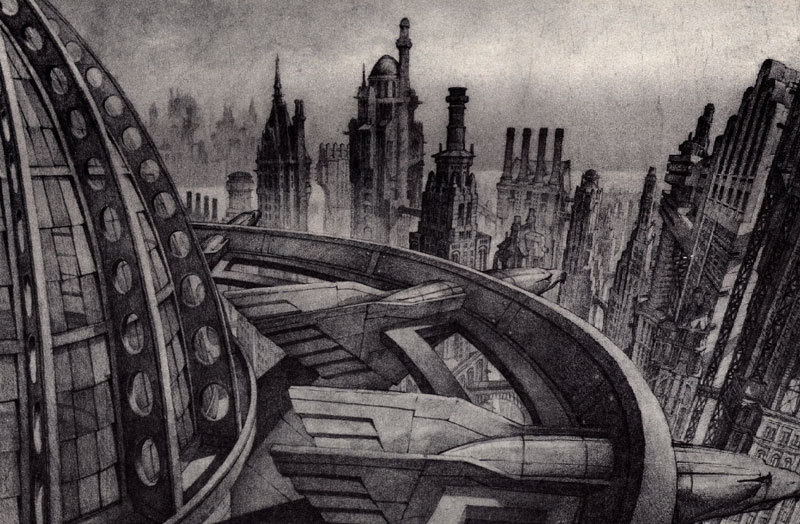
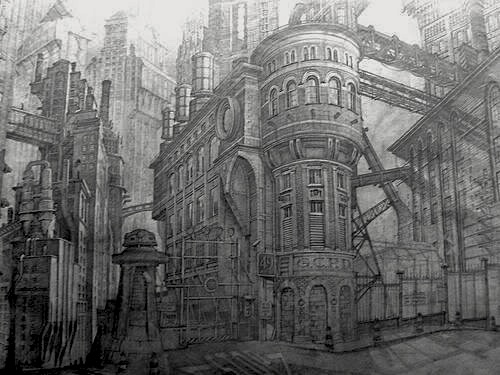

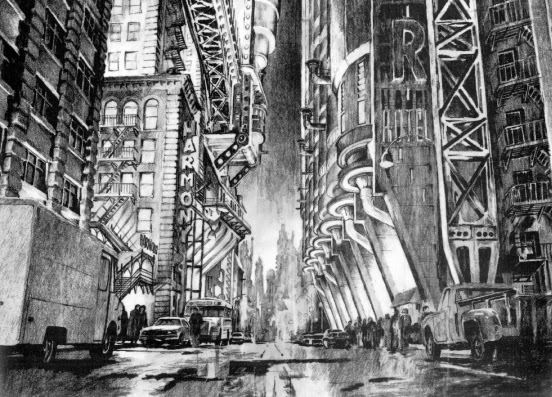
Chapter 21
Ephraim Ben Raphael
Banned
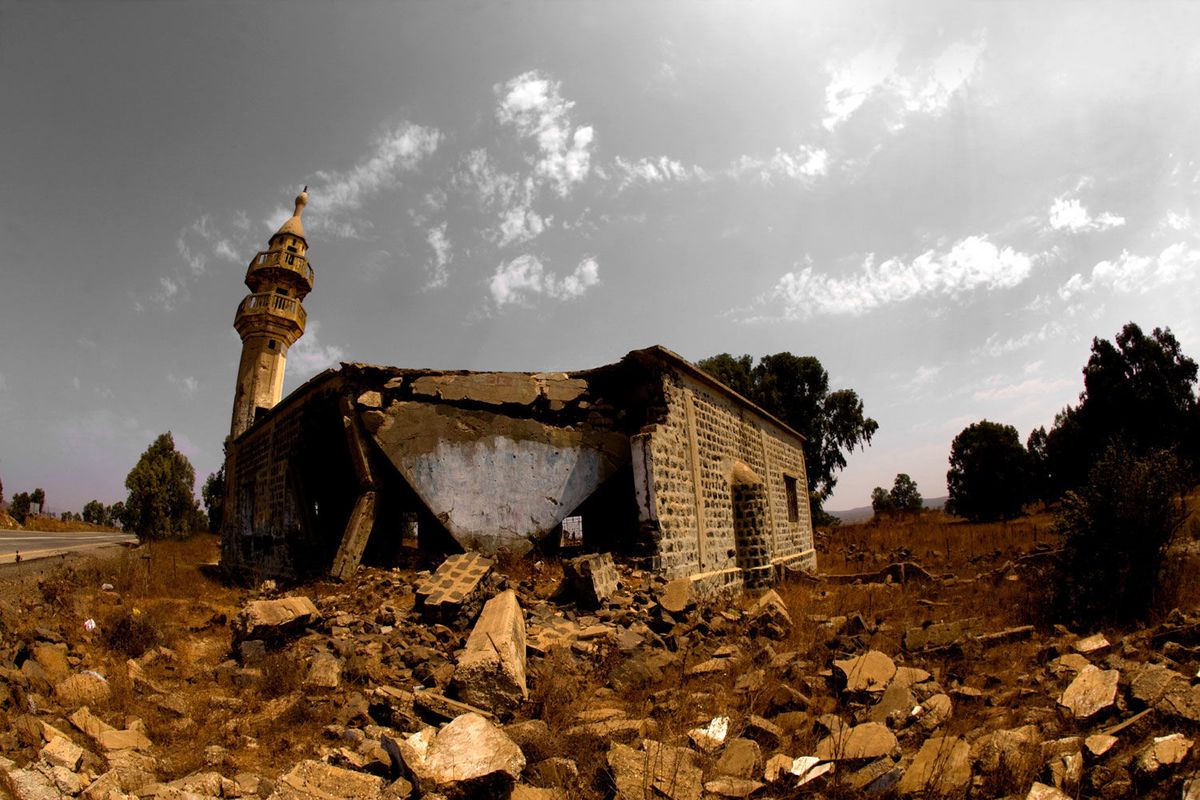
Chapter 21
The First Draco-American War lasted under a month from Judea’s declaration of independence until America and Drakia agreed to an armistice. It helped that both Perdue and Stoker were eager to bring the war to end. For the American President continuing the war risked elements within the US Navy acting to once again spin events out of the control of the civilian leadership. For the Drakian Autocrat continuing the war risked the full might of the Grand Alliance mobilizing to defeat the Empire. Peace thus served the interests of New York and Aurica and the governments involved were quick to make concessions. Drakia agreed to permit Bondsmen within areas liberated by the Americans, Judeans, and Arabians to emigrate freely overseas and pledged not to pursue any claims against the debts of such persons. It also agreed to allow any Jews or Arabs within the liberated areas to leave, despite the fact that both groups had no desire to abandon their homes. America, for its part, agreed to a time-table for the gradual withdrawal of its forces and stuck to it. Arabia- the only internationally recognized country to formally declare war on Drakia during the conflict- protested loudly, but had no viable means to continue fighting alone and settled for status quo ante bellum. Most of the liberated ex-Bondsmen found themselves settled in Central America where the United States government hoped to foster a loyal population hostile to the ongoing insurgency.
The Jews and Arabs- whether free or bonded- did not leave happily or easily.
As far as they were concerned, they were living in their homelands and the United States had just stabbed them in the back. Victory over Drakia had been possible, could still be possible, if only the Americans stepped up and went all out. The Arab rebels who had risen up against the empire when the war began had been living under the rule of a brutal and at times genocidal regime since the end of the World War and had taken up arms with the knowledge that dying for their cause was a very real possibility. They believed in freedom for their people and had nothing to lose- particularly the rebels outside of the liberated areas whose families and friends were not covered by the agreement to let the emigrate. The Judeans were a mix of refugees from Russia, from Rhomania, from other parts of the Middle East, ex-Bonded Jewish laborers, or those who had immigrated to avoid becoming Bonded, and voluntary immigrants from Germany, Poland, the United States, and a dozen other places. By definition they were true believers in the Zionist cause, either because it was that cause that had drawn their families to return to Holy Land, or because it was that cause that had saved them from death or Bondage. As the Americans and the Arabians withdrew, the children, the civilians, and the less-than-absolutely-committed evacuated with them under protest for resettlement in Central America, OTL Western Canada, or any one of a dozen other places.
As the Americans pulled out the US Marines - who sympathized strongly with their former local allies- abandoned large amounts of equipment that was recorded as lost in action. So it was that within the liberated areas of the Holy Land were left the most dedicated Jewish and Arab fighters, now armed with American weapons (including a handful of landcruisers and heavy artillery pieces), their noncombatants out of harms way, and they themselves ready to fight to the death.
Which is what they proceeded to do.

A Judean child-soldier during the Battle of Haifa. Ignore the colors painted on the arm of her coat.
The suppression of the Judeo-Arab Revolt proved longer and bloodier than First Drako-American War itself. It was not the first time the Empire had faced dedicated, resourceful insurgents with foreign aid and sympathy, but there was something that made this rebellion different. A sense that if they lost, when they lost, something would be broken that couldn’t easily be fixed. That this time Drakian rule would be permanent in a way it hadn’t been before. And so, as the world watched and listened to the radio and television broadcasts, the Judean Army, the Hebrew Home Army, the Islamic Resistance Movement, and the Holy War Army sold their lives dearly, Zionists and Mujahedeen fighting and dying side by side. They watched the fall of Jerusalem, the desperate last stands at Haifa and Jaffa and Beersheba. The Arab rebels in Syria and Mesopotamia were crushed to less international attention, but they fought no less hard. The Drakian Army moved in with numbers and resources well beyond anything they had, followed behind by Agoge units who vented their rage and frustration upon what remained of the non-military population.
There was international outrage, from the Jewish community, from the independent Muslim states, from civilized governments the world over. Letters of condemnation were issued, there were boycotts against Drakian goods, fundraisers to pay help resettle refugees, and new Jewish and Muslim communities established across the New World. But nothing was done to actual avert the massacre.
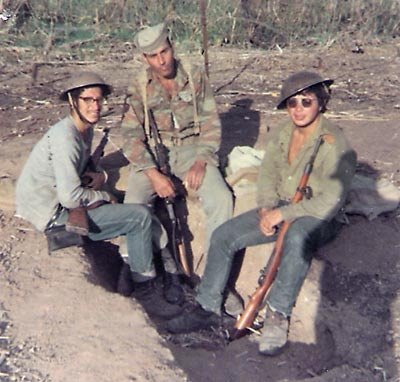
A Mujahadeen wearing parts of a cast-off US Marine uniform sits with a pair of fighters from the Zionist-Geoist Hebrew Home Army during the Judeo-Arab Revolt.
For Charles Perdue the First Drako-American War was a disaster that handicapped his administration until its ignoble conclusion in 1932. While Arthur Klein’s defection established for most Americans that the war had been illegal and that the US Navy needed to be brought under greater civilian control, the President would spend the rest of his time in office fending off accusations and condemnations regarding his handling of the matter. There were many who said that while the war was illegal it still should have been prosecuted to its conclusion, and even a dedicated minority who insisted that Klein himself was not actually a traitor and that he had been betrayed by Perdue, resulting in a false defection that was in some way a cunning plan to weaken Drakia. Abandoning the Judeans and the Arabs was unpopular with one side of the political spectrum, allowing in a wave of Jewish and Arab immigration was unpopular with the other. The US Navy was emasculated- the colonies it was responsible for received civilian territorial governments, the US Marine Corps was transformed into the naval infantry arm of the US Army (much to displeasure of many Marines), and the US Coast Guard assumed all responsibility for naval home defense and the entire Caribbean Fleet (which included two active battleship divisions and a carrier group). The Navy’s carriers continued to be crewed by Naval personnel, but their pilots and aircrews were part of the Naval Air Service that answered to the USCG command in New York. America’s actual naval capabilities were theoretically unimpaired, just split up among multiple service branches, but in practice the reorganization plus the mass removal of senior officers with suspect connections to Klein, substantially weakened American naval power.
Franklin Richardson avoided the worst of the blame for the debacle and was merely pushed into retirement, then replaced as director of the Black Chamber by a political appointee who took the organization down a far less aggressive path.
To say that the United States turned to isolationism in the period between the First Drako-American War and the Great Pacific War would be inaccurate. America had no history of isolationism in the Separate-verse, and it continued to maintain its treaty obligations overseas and keep a concerned eye on foreign developments. It would be accurate however, to say that domestic issues dominated American politics and that foreign affairs took a back seat. The fight for the soul of America continued; should it be a multi-racial nation unified by a common culture, or a multicultural nation unified by the dominance of a single race? (“Or even,” said the Socialists, “a nation both multiracial and multicultural?” “But then,” said their opponents “what will unify the nation?”) The different cultural revival movements continued, splintering, reinventing themselves, and quarreling over their actual goals. The weakest ethnic groups politically were Asian-Americans (the Whigs considered their alien culture a barrier to assimilation, the Nationalists considered them racially inferior to Whites and Natives), followed by the new wave of Middle Eastern immigrants (less the Jews than the Muslims, although the mostly Sephardic and Mizrahi Judeans faced a chilly reception in some places), and many in those communities radicalized and became politically active. The nativists- a term that meant something slightly different ITTL- pushed back. With the Corrupt Bargain finished in Mexico there was a major movement hoping to abolish the Jim Crow-esque system in the Floridas and Arkansas, three states who found allies as far afield as Quebec, Cuba, and Ixcanha who were concerned that limits on “Southron cultural autonomy” would lead to limits on their own cultural autonomy. The situation sharpened with an economic recession that began in the early thirties, and the decade was one of mounting protests, political riots, and even terrorism and assassination.

In states like California Asian-Americans were subject to boarding school programs that took their children away from them for "Americanization" and other policies designed to pressure them to "act, dress, and behave American".
At the heart of the American crisis was the insurgency in Central America.
ITTL the Federal Republic of Central America was conquered by the Mexican regime of Nicolas Bravo in 1831-3 before it had a chance to collapse on its own. The Central American territories then fought a prolonged insurgency, resisting until Bravo was forced to withdraw his troops in 1844 to fight the United States during the First Mexican-American War, resulting in the Revolution of 1845 (aka “La Eneria”) when the “Centroaméricanos” successfully ejected their Mexican occupiers. While attempts to reunify the region were short-lived (the new Federation of Central America managed to permanently unify only OTL Guatemala, El Salvador, and a small part Chiapas) there remained a regional identity rooted in Central America’s joint experience of foreign occupation and their successful resistance to that occupation. As America annexed the sub-continent one piece at a time this legacy of resistance to external conquest had been invoked, ever more strongly as American rule became ever more entrenched, and the Centroaméricanos themselves remained angry, devoted to their national and regional identities, and hostile towards the United States.
The sole exception to this was Panama, which had never been independent before America acquired it from Colombia, and lacked the shared experiences of the rest of the region.
America was unsure what to do with Central America. It had encountered resistance to territorial expansion before of course, there was always some resistance from the Natives when settling the frontier, and there had been resistance in Mexico, and even a small amount in Canada. The way to deal with resistance was to recruit local allies- Native American tribes who got with the program, the Mexican Criollos, the majority of Canadians and Quebecois who were pro-American- by giving those allies a vested interest in defending American rule (grant them equal rights, a role in the government, respect their land ownership, etc.). You could then partner the local expertise of your allies who knew the area with the might of the United States military, and resistance would diminish. The American experience with expansion was that insurgents could be annoying but never successful, if you just held on long enough then new territory would integrate. The post-World War backlash had challenged this view, but the fact that movements like La Mexicanidad mostly sought cultural autonomy and a greater political voice through the American political system rather than independence, confirmed for most Americans that once the United States acquired territory that acquisition was permanent.
The New World Colossus had victory disease.
A Centroamérican insurgent cell in Nicaragua.
Perdue attempted a policy of “normalization”, admitting Honduras, Nicaragua, and Panama as formally Hispanophone states, and pressuring Guatemala (formerly the FCA) and Costa Rica to ease their voting restrictions. The hope was that by giving the Centroaméricanos their own states, with the same power and autonomy as any other American states, plus the sort of guaranteed cultural freedoms that La Mexicanidad wanted, would remove support for the insurgents and calm the situation. Normalization ended with an abysmal failure, given the freedom to vote for their own future Guatemala, Honduras, and Nicaragua promptly elected state governments that were dominated by pro-independence parties who announced their intention to secede from the Union, and only reason why Costa Rica didn’t was because the state government there had successfully resisted pressures to reform its electorate. (Panama returned Nationalist pluralities to its legislature, and elected a Nationalist governor) Faced with the possibility of the largest domestic uprising since the end of the ACW, Perdue refused to let the elected state governments take their seats, disqualifying all elected individuals who espoused support for independence and declaring their opponents victorious. The Central American governments permitted to exist by Federal authorities were thus dominated by loyalists who promptly restricted to the right to vote or run for office to persons willing to swear anti-secession loyalty oaths to the Union. Violence in the region intensified and Perdue’s successor (President Seth Sandoval of the Whigs) was forced to introduce movement restrictions between Central America and the rest of the United States (and within Central American) to stymie the activities of Centroamérican terrorists, who had taken advantage of free movement to launch attacks elsewhere in the United States.
To be sure there were communities within Central America that supported the United States- the Kriols and Baymen of former British Honduras, the Q’eqchi’ Maya who had a history of enslavement by Hispanic Centroaméricanos, the Miskito and Garifuna of mixed Afro-Native descent, the ex-Bondsmen and other refugees from Drakia who had been settled in the region, a few Anglo-American immigrants, and of course the usual collaborators and quislings who pop up whenever a country is occupied. But these groups were distinct minorities, almost universally the Centroaméricanos themselves (whether Mestizo or Criollo) wanted independence. There was some hope for Panama, and for Guatemala where a plurality of the population was composed of Natives with no particular loyalty to either the United States or the Centroamérican cause, however even those states were rocked by constant violence.
Compounding the problem were nationalist radicals in Old Mexico and the Mexican minority in Ixcanha who, though they lacked the broad popular support of the Centroamérican insurgents, waged a campaign of violent terror and assassination.

Firefighters respond to the aftermath of a Centroamérican terror attack in Texas.
It should be no surprise that in the face of such challenges the United States turned increasingly inward.
Faced by a major insurgency on its own soil America was disinclined to spend lives and treasure maintaining its hold over the Seven Ducklings. Following the formation of the Arab Union in 1933, when a coup by Arabist officers within the Omani military overthrew the last sultan of Oman and invited King Omar I of Arabia to assume the throne of both countries, the Republic of Dubai asked New York for permission to hold a plebiscite on joining the new union. Permission was granted, and the republic peacefully dissolved itself after the vote returned a resounding yes. Borneo, Malaya, and Nam Viet were also allowed to slip their bonds and assume full independence one after the other, provided of course they remained members of the International Trade Organization and the Grand Alliance. Only Ireland, Insulindia, and the Philippines remained of the Seven Ducklings, and only in the later did major resistance present itself.
Globally, countries that had long resented American hegemony and the New Order of the Ages that was designed to enrich and empower the United States at the expense of the rest of the planet began to actively seek alternatives to American ascendency. At the same time great powers began to put themselves forward as potential patrons for those countries looking for a way out. The weakest of the great powers in question was the German Confederation, which sought to create an bloc of European countries unified by the ideology of “Rex”. Rex was an ultranationalist movement that had emerged in the aftermath of the World War in Italy, gaining mass popularity across the continent. Rex was not OTL Fascism, and it was certainly not Nazism, although it did share some similarities. Followers of Rex sought the “moral purification” of modern society through religious faith, and opposed Liberalism, Geoism, Socialism, Utopianism, and American Fascism. Partially descended from the conservative wing of the Red Movement, and partially inspired by Societism, Rex dreamed of a society in which labor, management, government, and the church all filled their proper roles amid a framework of traditional social values and behavior. The second of the great powers offering itself as an alternative to the United States was of course Japan. With an industrial base and the ideology of Imperial Democracy, Japan was an attractive option to those who found Drakia too distasteful and were concerned that Germany was too weak and too distant. Japanese ideas of Pan-Asianism limited its appeal however, as did its clear vision of an Asia not merely united as an alliance of Asian states, but as a single political unit dominated by Japan. The third great power putting itself forward was of course the Drakian Empire, fresh from its technical “victory” over the United States.

The Arabists didn't have much use for non-Muslims or non-Arabs (except as foreign allies), but they were insistent on the principle of a united Arab people regardless of what regional flavor of Arab they might be, or what brand of Islam they might practice. The Arab Union stressed unity in the face of the Drakian menace, adopting a defensive strategy based around mass militarization. Just under a third of the population served in the military in some fashion- whether as regular troops, reserves, home guard, or armed youth units. As most government institutions and private or semi-private industries also had supportive responsibilities pertaining to the military, this meant that almost the entire population was involved in national defense. Civil defense drills were held monthly, involving all citizens over the age of twelve, and much of the county's GDP was devoted to the construction of ubiquitous military fortifications. Arabia knew the dragon was coming, it would be ready when it did.
An alliance between all three powers was impossible- Japanese anti-colonialism ruled out an alliance with Drakia just as their anti-European views prevented an alliance with Germany, and while Drakia was open to allying with the Germans, the followers of Rex were too appalled by Drakian brutality and the nature of Drakian Christianity to accept any such coalition.
Fortunately (or rather unfortunately), there were three countries outside of the Empire where Societism was triumphing over its political rivals, and Stoker was pragmatic enough to accept allies anywhere he could get them. Even if those allies flew the Green Banner of Radical Geoism.

Once again I failed to cover anywhere near as much as I planned to in a chapter. The next chapter will talk about further political developments in Europe and Asia, Drakia post the First Drako-American, and what did happen to Admiral Klein? Technology to follow.
Last edited:
*O R G A N I C G E R M A N Y intensifies*Rex was not OTL Fascism, and it was certainly not Nazism, although it did share some similarities. Followers of Rex sought the “moral purification” of modern society through religious faith, and opposed Liberalism, Geoism, Socialism, Utopianism, and American Fascism. Partially descended from the conservative wing of the Red Movement, and partially inspired by Societism, Rex dreamed of a society in which labor, management, government, and the church all filled their proper roles amid a framework of traditional social values and behavior.
I am getting very odd OTL Isreal vibes from the Arab Union. Probably from the whole siege mentality.
The suppression of the Judeo-Arab Revolt proved longer and bloodier than First Drako-American War itself. It was not the first time the Empire had faced dedicated, resourceful insurgents with foreign aid and sympathy, but there was something that made this rebellion different. A sense that if they lost, when they lost, something would be broken that couldn’t easily be fixed. That this time Drakian rule would be permanent in a way it hadn’t been before. And so, as the world watched and listened to the radio and television broadcasts, the Judean Army, the Hebrew Home Army, the Islamic Resistance Movement, and the Holy War Army sold their lives dearly, Zionists and Mujahedeen fighting and dying side by side. They watched the fall of Jerusalem, the desperate last stands at Haifa and Jaffa and Beersheba. The Arab rebels in Syria and Mesopotamia were crushed to less international attention, but they fought no less hard. The Drakian Army moved in with numbers and resources well beyond anything they had, followed behind by Agoge units who vented their rage and frustration upon what remained of the non-military population.
There was international outrage, from the Jewish community, from the independent Muslim states, from civilized governments the world over. Letters of condemnation were issued, there were boycotts against Drakian goods, fundraisers to pay help resettle refugees, and new Jewish and Muslim communities established across the New World. But nothing was done to actual avert the massacre.
That's absolutely heartbreaking; doomed brothers(and sisters)-in-arms, fighting desperately and without hope against terrible evil, while the world watches and does NOTHING. I hope they bled the Drakian bastards, and bled them good. They must've; fighting on Sun Tzu's "desperate ground" with no hope of retreat or quarter, they must have been magnificent. No less doomed, of course. I'm surprised that the Drakians had the guts to finish them, though I suppose I shouldn't be. Were they afraid that if one rebelled successfully, then all would? What did it cost, and was it worth the butcher's bill?It certainly was not, even taking into account Mesopotamian oil (after all, Drakia has Nigeria and North Africa, so it has oceans of oil elsewhere to exploit). If it had been 1920 B.C. instead of A.D., sure. But the Fertile Crescent just isn't worth that much by this point.What did it cost, and was it worth the butcher's bill?
I could see the free nations of the world while not taking any direct overt operations against the Dragon spawn did probably do plenty of shady behind the scenes deals. With them having arms dealers, smugglers and the like delivering weapons to the Muslim and Jewish rebels, proto special forces training insurgents etc.
Perdue you utter fool! I hope he's viewed as the worst American President
So the Greens and the Reds are forming an alliance, huh? I suppose that's one way to do a Christmas truce
I'm kinda curious about what other ideologies might pop up within the near future of this world. The first that springs to mind would an analog to the OTL Technocracy movement believing society should be not governed by hereditary rulers or from elected officials but through trained professionals, experts in their respective fields. Mixed with some other elements of various other OTL ideologies...
- Sharing communisms desire to stamp out religion believing them to be nothing more than outdated superstitions that have done nothing but perpetuate atrocities in the name of non existent idols.
- They also share their love for centralized planning and nationalization of certain Industries.
- Though on the other hand they've also fully willing to embrace capitalism believing the inherent competitiveness when properly managed drives Innovation and weed out the less effective members of society.
- That and they also share the eugenicists interest in sterilizing certain members of society. Viewing it as the most efficient way to weed out harmful genetic traits from the general populace. Though on the other hand they may not be that comparatively racist believing skin color and the like to be at most adaptive mutantions meny for local populations to better handle their local environment.
- On the environment they may see it as nothing more than another resource to be used. One that must be properly managed and maintained to ensure long term stability...
- Also some social darwinist views of kill or be killed and that conflict with other societies is an inherent inevitability. Along with nationalist sentiments of expand or die.
With the industry of China contributing to help Japan, the Empire have further leveled its playing field with America.
Problem with that is the Chinese aren't going to be content to play second fiddle to the Japanese forever.
- Status
- Not open for further replies.
Share: